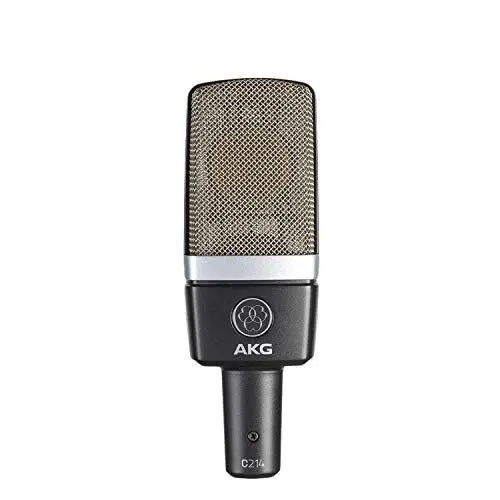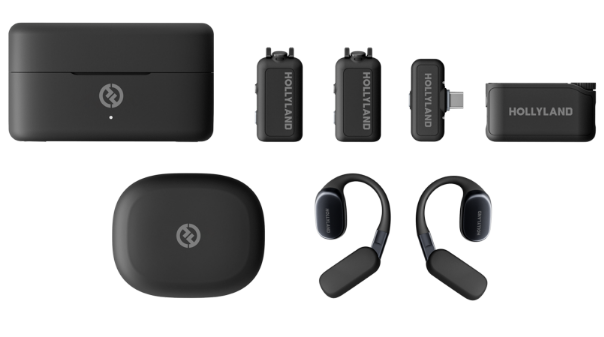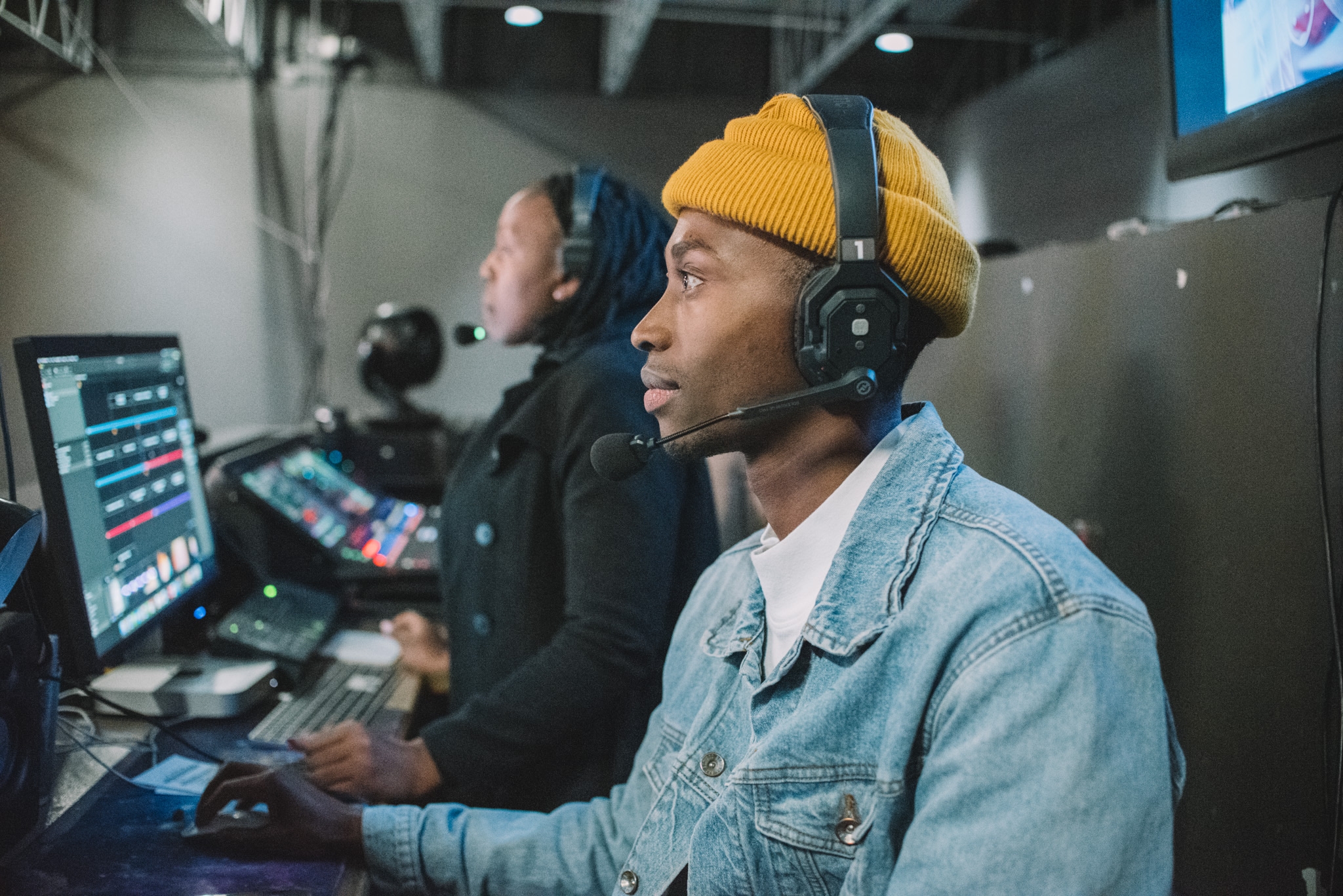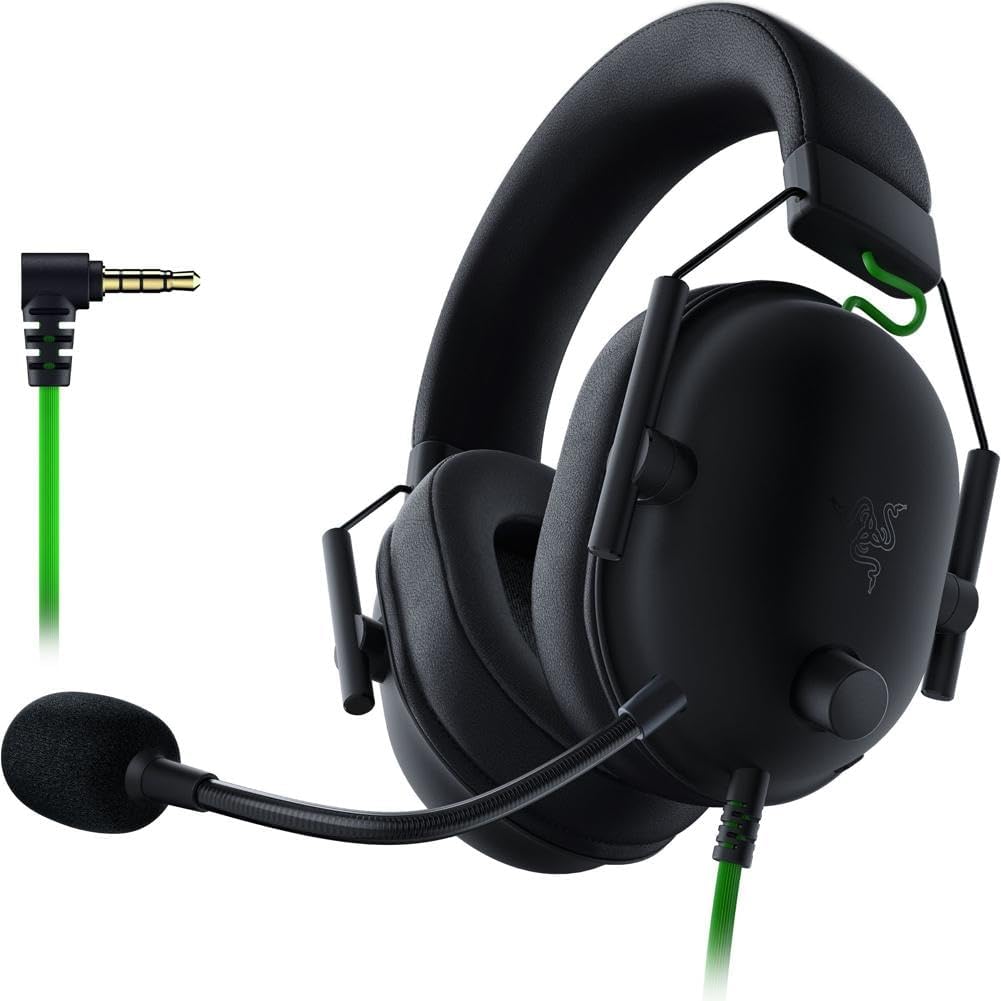Creating an audiobook that captivates the listener’s imagination starts with the right microphone. A high-quality mic is essential for capturing clear, crisp audio, ensuring that every word is heard as it was intended. Whether you’re narrating a thrilling adventure or a compelling biography, the microphone becomes your main tool in bringing stories to life. Our carefully curated listicle reveals the best microphones tailored for audiobook recording, taking into account clarity, ease of use, and overall sound quality. Get ready to transform your narratives into auditory masterpieces with our top picks!
When selecting the best microphones for audiobook recording, the primary goal is to capture the narrator’s voice clearly and naturally, while minimizing background noise and distortion. Here are the criteria to consider while choosing the right microphone:
- Polar Pattern: Look for a cardioid polar pattern, which picks up sound from the front and minimizes noise from the sides and back, helping to isolate the reader’s voice.
- Frequency Response: A microphone with a wide frequency response offers better capture of the human voice in all its nuances, ensuring that both low and high tones are recorded with clarity.
- Diaphragm Size: A larger diaphragm microphone is typically more sensitive and better for capturing the subtleties and dynamics of spoken word performances.
- Connectivity: Consider how the microphone connects to your recording setup. XLR microphones are professional-grade and require an audio interface, while USB microphones plug directly into a computer for convenience.
- Durability and Build Quality: Since producing an audiobook can be a long-term project, a durable microphone that can withstand prolonged use is important.
- Accessories: Shock mounts, pop filters, and stands can all help improve recording quality and should either be included or be compatible with your mic choice.
- Price: Professional-level mics can be expensive, so find a microphone that delivers the best quality within your budget.
By evaluating these key factors, you can identify the best microphone for your audiobook recording needs, one that provides clear, consistent audio performance throughout your project.
| Microphone | Price (approx.) | Type | Polar Pattern | Frequency Response | Sensitivity | Additional Features |
|---|---|---|---|---|---|---|
| Rode NT1-A | $230 | Condenser | Cardioid | 20Hz – 20kHz | -31.9 dB | Low noise, includes shock mount, pop shield |
| Audio-Technica AT2020 | $99 | Condenser | Cardioid | 20Hz – 20kHz | -37 dB | Versatile, good for home studios |
| Neumann TLM 103 | $1,300 | Condenser | Cardioid | 20Hz – 20kHz | -23 dB | High sound quality, low self-noise |
| AKG Pro Audio C214 | $399 | Condenser | Cardioid | 20Hz – 20kHz | -34 dB | Integrated suspension, double mesh grill for high RF immunity |
| Shure SM7B | $399 | Dynamic | Cardioid | 50Hz – 20kHz | -59 dB | Flat, wide-range frequency response, highly durable |
Each microphone brings something different to the table, with the Rode NT1-A known for its incredibly low noise, making it a popular choice among home studios. The Neumann TLM 103, while quite pricey, is renowned for its superior sound quality and is a professional studio standard. The Audio-Technica AT2020, on the other hand, offers great value for those just starting out or with budget constraints. The AKG Pro Audio C214 and Shure SM7B are both mid-range price-wise, with the C214 being known for its high RF immunity, great for a range of conditions, and the SM7B being highly praised for its durability and performance in broadcasting environments.
Considering all these factors will help you make an informed decision on which microphone is the best for your audiobook recording needs based on quality and budget preferences.
Rode NT1-A

Overview
The Rode NT1-A has claimed its fame in the recording industry as the ‘quietest studio microphone’ due to its low self-noise level. It’s a remarkable piece of equipment for those stepping into the world of audiobook recording, offering a sense of professionalism without an intimidating price tag. My experience with the NT1-A has been nothing short of stellar. Upon unboxing, the solid build and sleek design were my first impressions, hinting at the quality of recordings it would produce.
Using the NT1-A feels like the microphone is doing half the work for you. It captures the full range of vocal frequencies with a pleasing warmth and clarity, making your voice sound crisp and clear. Moreover, the cardioid pickup pattern is brilliant at minimizing background noise.
Specs
- Acoustic Principle: Pressure Gradient
- Active Electronics: JFET impedance converter with bipolar output buffer
- Polar Pattern: Cardioid
- Frequency Range: 20Hz – 20kHz
- Output Impedance: 100Ω
- Maximum SPL: 137dB SPL (@ 1kHz, 1% THD into 1KΩ load)
- Sensitivity: -31.9dB re 1 Volt/Pascal (25.00mV @ 94 dB SPL) +/- 2 dB @ 1kHz
- Equivalent Noise: 5dBA SPL (per IEC651)
Pros:
- Exceptionally low self-noise makes it perfect for narration and voice work.
- The microphone’s warm tone adds a natural depth to spoken word recordings.
- Comes as a complete package with a shock mount, pop filter, and XLR cable, which is great for beginners.
- The price to performance ratio is highly commendable.
Cons:
- Requires a good quality audio interface or preamp to truly shine.
- Its sensitivity means room acoustics need to be well considered to avoid unwanted reverb.
- Lacks the versatility of multi-pattern microphones for different recording situations.
Price
The Rode NT1-A typically hovers around the $200-250 mark, which I find to be an excellent investment for its robust build and audio quality. While it may not be the absolute cheapest option, the value it provides for audiobook recording is outstanding. This microphone could very easily be priced higher and still be considered great value, which makes it a wise choice for narrators who are serious about their craft.
Certainly, let’s dive into an in-depth review of the Audio-Technica AT2020, the second microphone on your list.
Audio-Technica AT2020

Overview:
The Audio-Technica AT2020 is a well-regarded microphone in the industry, known for its versatility and clarity. For audiobook recording, you want a microphone that captures the nuances of the spoken word, and the AT2020 excels in this area. Its design is simplistic yet sleek, with a robust construction that promises durability. When using the AT2020, I was impressed by how well it captured the natural tone of the voice without unwanted coloration, which is critical when creating an immersive audiobook experience.
Specs:
- Microphone Type: Condenser
- Polar Pattern: Cardioid
- Frequency Response: 20Hz to 20kHz
- Output Impedance: 100 ohms
- Sensitivity: -37 dB (14.1 mV) re 1V at 1 Pa
- Phantom Power Requirements: 48V DC, 2 mA typical
- Weight: 345g (12.1 oz)
Pros & Cons:
Pros:
- Offers crisp and clean voice capture, which is perfect for the spoken word.
- The cardioid pattern effectively minimizes background noise, prioritizing your voice and helping to keep recordings free of unwanted ambient sound.
- Requires minimal setup, which is a boon for users who may not be as technically inclined.
- The build quality feels solid, which is reassuring for frequent users or those who operate in a home studio environment that might see a fair bit of handling.
- Great value for money, considering the professional audio quality it delivers.
Cons:
- The AT2020 does not come with a USB option in this variant, which means you’ll need additional equipment, such as an audio interface, to connect it to a computer.
- It lacks onboard controls like a gain knob or a pad switch which can offer more on-the-fly tweaking options for advanced users.
- It does not include a shock mount, which is almost necessary for reducing handling noise and should be considered as an additional purchase.
Price:
The price of the Audio-Technica AT2020 is quite competitive; it sits in the lower to mid-range bracket, making it accessible for voice artists who are just starting out or those who have a limited budget for studio equipment. Expect the price point to hover around the $100 mark, although this can fluctuate slightly depending on the retailer.
In my opinion, the Audio-Technica AT2020 shines as a foundational piece of equipment for recording audiobooks. It delivers professional-quality sound without necessitating a professional studio setup, striking a balance between simplicity and performance. The key is to pair it with the right accessories and recording environment to get the most out of this capable microphone.
Neumann TLM 103

Overview:
The Neumann TLM 103 is a formidable contender in the world of professional audio recording, particularly for audiobook production where clarity and vocal presence is paramount. Known for its stunning sound quality that harks from a brand with a revered legacy, the TLM 103 is often found in the studios of audio professionals dedicated to producing top-tier vocal recordings.
Upon using the TLM 103, the first thing that strikes me is its uncomplicated nature – it excels at capturing voice with a naturalness and warmth that many microphones struggle to achieve. Without resorting to over-technical jargon, it’s like the TLM 103 takes the genuine tone of the speaker and adds a touch of studio magic, making the end result feel polished and ready for the listener’s ears.
One thing I appreciate immensely about this microphone is how it handles the sibilance and plosive sounds that are often a concern when recording spoken word content. The TLM 103 maintains a well-balanced tone without the harshness that can sometimes accompany ‘S’ and ‘P’ sounds. This kind of detail is where the TLM 103 shines and displays its worth in producing professional audiobooks.
Specs:
- Cardioid pickup pattern (great for isolating the voice from room noise)
- Large-diaphragm condenser capsule (captures the nuances of the voice)
- Transformerless circuitry (ensures low noise)
- A high SPL handling capability (can take loud volumes without distortion)
Pros & Cons:
Pros:
- The sound quality is simply exceptional, with a rich and detailed capture.
- It has a flattering presence boost that brings life to the spoken word.
- The build quality is robust and carries the Neumann heritage of reliability.
- Requires minimal post-processing, which saves time and effort in audio editing.
Cons:
- Its price point is on the higher side, definitely an investment.
- Being a high-caliber microphone, it picks up every sound, hence a well-treated room is non-negotiable.
- Does not include a built-in pop shield or shock mount, which are essential accessories for recording spoken word and need to be purchased separately.
Price:
The Neumann TLM 103 is indeed a premium microphone, and the price reflects that. You’d be looking to invest a significant amount, often hovering around $1,100 or more, depending on where you shop. Although it is a steep price for those just starting, for professional audiobook producers, this microphone is an investment in audio quality that can distinguish between an amateuristic and a high-caliber final product.
In conclusion, the Neumann TLM 103 is not just another microphone. It’s a statement of quality and dedication to the craft of audio recording. If you’re serious about producing audiobooks that stand out in terms of vocal clarity and warmth, the TLM 103 is a powerhouse that can take your recordings to professional heights – provided you’re ready to make the investment.
AKG Pro Audio C214

Overview:
The AKG Pro Audio C214 is a highly respected microphone, known for its versatility and remarkable sound quality, which I’ve found to be exceptional for a range of audio recording tasks, including audiobook production. The C214 offers a warm and clear sound, capturing the nuanced tones and inflections of a narrator’s voice with ease, making it a go-to choice for vocal recording.
The microphone’s design is robust and has a sleek finish, giving it a professional look that matches its performance. In my experience, it captures audio with a level of detail that can draw in listeners, creating an intimate and captivating audiobook experience. The C214’s ability to reject off-axis sounds is also impressive, ensuring recordings are free from unwanted background noise and focus sharply on the narrator’s voice.
Specs:
- Polar Pattern: Cardioid
- Frequency Response: 20 Hz to 20 kHz
- Sensitivity: 20 mV/Pa
- Equivalent Noise Level: 13 dB-A
- Signal to Noise: 81 dB
- Dynamic Range: Up to 143 dB
- Filter: 160 Hz, 6 dB/octave, switchable
Pros:
- The C214 yields a warm, yet detailed sound that is ideal for the spoken word.
- It has excellent dynamic range, which allows it to handle both subtle nuance and intense passages without distortion.
- Its build quality is solid, promising durability and longevity.
- It includes a switchable bass-cut filter, which helps in reducing rumble or footfall noise during recording sessions.
Cons:
- It might be slightly pricier for those on a tight budget compared to entry-level microphones.
- Requires 48V phantom power, which means additional equipment is necessary if not already in place.
Price:
The AKG Pro Audio C214 typically retails for around $350 to $399, which I believe is a fair price given its performance and build quality. While it may not be the cheapest option available, the investment is sound for those committed to producing top-notch audiobook recordings.
In my opinion, the C214 strikes an excellent balance between cost and performance. It doesn’t quite reach the dizzying heights of the most expensive studio microphones, but it surpasses what you’d expect from the majority of microphones within its price range, offering clear, detailed recordings with a touch of that coveted studio magic. If you’re looking to hook your listeners with every word, this mic will not disappoint.
Shure SM7B

Overview:
The Shure SM7B is a renown microphone in the world of audio recording, celebrated equally by podcasters, musicians, and audiobook narrators alike. It’s a dynamic microphone, meaning it’s great at picking up your voice while rejecting a lot of the background noise that other mics might capture. What makes it particularly outstanding for audiobook recording is its warm, smooth sound – it can make almost any voice sound rich and professional. It has a history of being used in radio and has gained a reputation for its durability and consistent performance.
From my experience, the Shure SM7B is a gem among microphones, especially when you’re in a less-than-ideal recording space that isn’t perfectly soundproof. It focuses right on your voice and gives it that studio-quality sound, even if you’re working from a home studio. The construction is solid and gives a sense of reliability that’s reassuring. There’s an almost visceral pleasure in handling and using equipment that feels like it’s built to last, and the SM7B certainly fits that description.
Specs:
- Type: Dynamic
- Polar Pattern: Cardioid
- Frequency Response: 50Hz to 20kHz
- Output Impedance: 150 ohms
- Sensitivity: -59 dB
Pros & Cons:
Pros:
- Exceptional at isolating your voice and minimizing background noise.
- Produces a professional, broadcast-quality sound that’s perfect for narration.
- Robust and built to withstand the rigors of daily use.
- It has a classic look that hasn’t changed much over the years, giving it a timeless character.
Cons:
- Being a dynamic microphone, it needs a decent amount of gain, which might require an additional preamp or a high-quality audio interface.
- It doesn’t come with its own microphone stand, so there will be additional costs for proper setup.
- Its weight and size require a sturdy boom arm or mic stand.
Price:
The Shure SM7B isn’t the cheapest mic on the market – its price usually hovers around the $400 mark. This puts it midrange in terms of cost: not the most expensive, but certainly a step up in price from entry-level mics. The investment, however, is justified by the unmistakable rise in audio quality it will bring to your recordings.
In conclusion, the Shure SM7B may require a bit of additional investment for peripheral gear, but the sound quality and durability it offers are top-notch. It’s a microphone that can take a voice recording from amateur to professional with its soothing timbre and clarity. If you’re serious about audiobook recording and want to ensure every word is captured perfectly, this is a stellar choice.
Conclusion:
To conclude, finding the best microphone for audiobook recording is a crucial step in producing high-quality content that captivates your audience. Whether you’re a seasoned narrator or a budding storyteller, choosing from the mics on our list will ensure that your voice is clear, crisp, and engaging. Remember, the microphone is your instrument; it conveys the emotion and depth of your narration, so investing in the right one will elevate your audiobook to professional standards. Take your pick and let your voice be heard in pristine clarity!
For audiobook narrators seeking flexibility and clear audio capture without being restricted by cables, a wireless lavalier microphone is a convenient choice. Its compact size and exceptional clarity make it perfect for lengthy recording sessions, providing audiobook creators both comfort and high-quality results.
FAQs:
- Does the room acoustics matter when recording an audiobook?
Yes, room acoustics greatly affect your recording quality. Even with a high-quality microphone, poor room acoustics can result in undesirable reverb and echo. It’s best to record in a quiet, well-dampened space. - How important is a pop filter for audiobook recording?
A pop filter is important as it helps to reduce or eliminate popping sounds caused by the fast-moving air of ‘plosive’ consonants. This leads to a cleaner recording. - Can I use a USB microphone for professional audiobook recording?
Yes, many USB microphones offer high-quality recording suitable for audiobook production. They are also more convenient and easier to set up than XLR microphones, which require additional equipment.

































.png)








